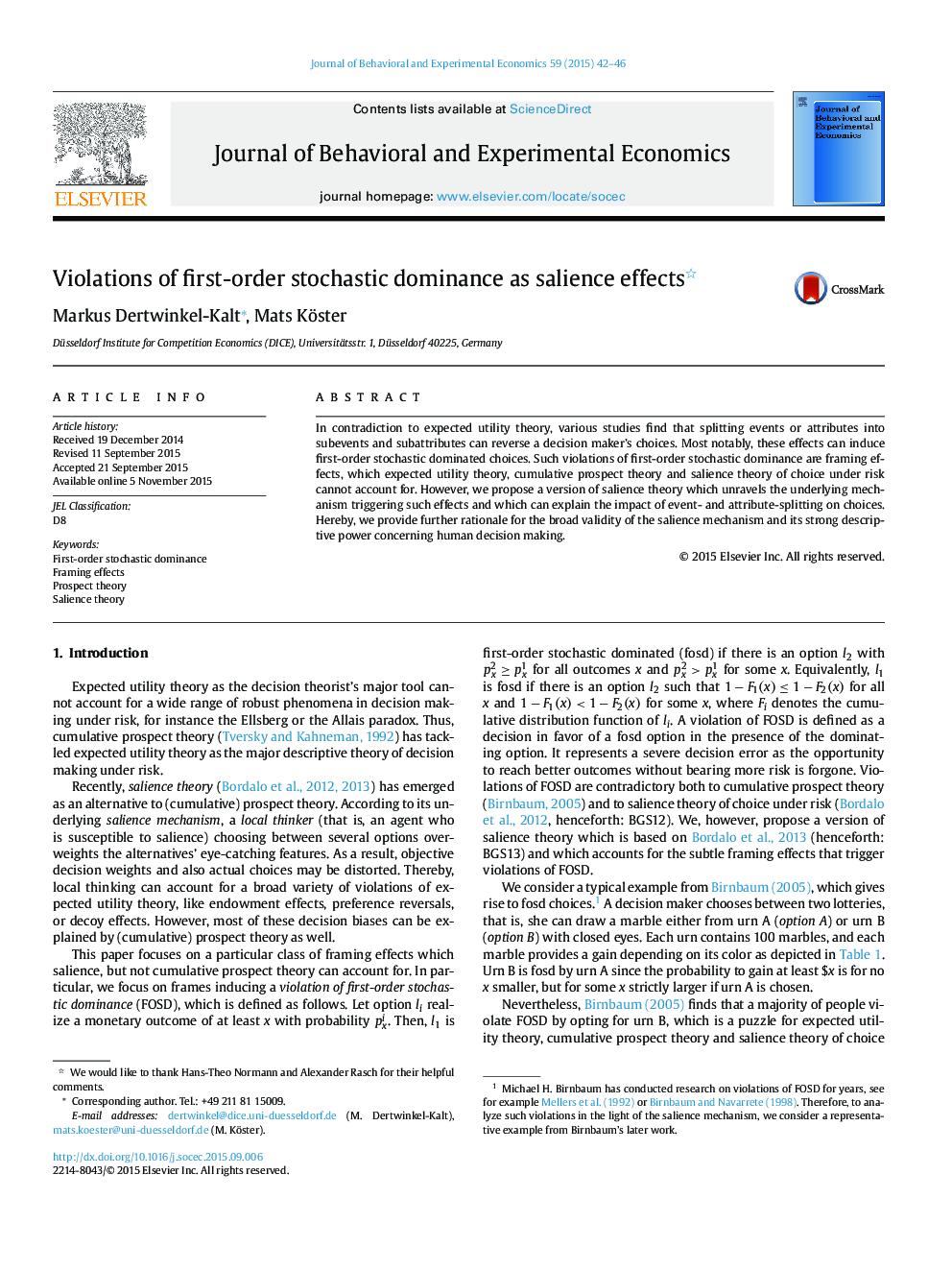| Article ID | Journal | Published Year | Pages | File Type |
|---|---|---|---|---|
| 881849 | Journal of Behavioral and Experimental Economics | 2015 | 5 Pages |
•In specific choice tasks, subjects make first-order stochastic dominated choices.•These violations of first-order stochastic dominance are framing effects.•Cumulative prospect and salience theory of choice under risk cannot account for these effects.•We propose a version of salience theory which accounts for these framing effects.•We complement the comparison between prospect and salience theory.
In contradiction to expected utility theory, various studies find that splitting events or attributes into subevents and subattributes can reverse a decision maker’s choices. Most notably, these effects can induce first-order stochastic dominated choices. Such violations of first-order stochastic dominance are framing effects, which expected utility theory, cumulative prospect theory and salience theory of choice under risk cannot account for. However, we propose a version of salience theory which unravels the underlying mechanism triggering such effects and which can explain the impact of event- and attribute-splitting on choices. Hereby, we provide further rationale for the broad validity of the salience mechanism and its strong descriptive power concerning human decision making.
